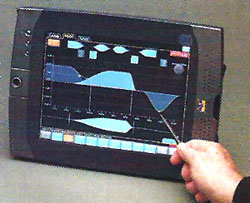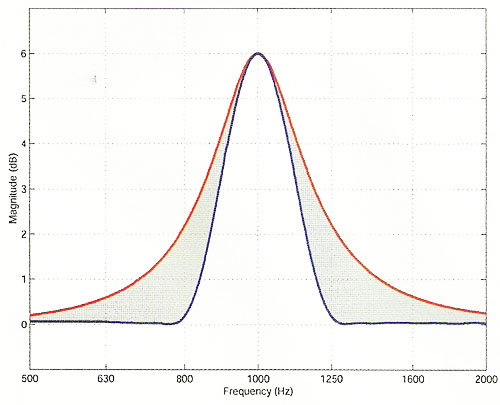
The Contour provides all of the traditional cross-over types commonly used in loudspeaker systems. However, it also introduces linear phase, “brick-wall” crossovers, with slopes exceeding 100 dB per octave.
The introduction of these advanced crossovers affords significant benefits when applied to various types of loudspeaker arrays. Off-axis lobing and cancellation between drivers through crossover transition bands can be eliminated. In most loudspeaker array designs, improvements of up to 6 dB in acoustic output power may be expected.
The linear phase aspect of the brick-wall crossover design significantly improves the loudspeaker’s impulse response, providing a time-coherent wavefront. This optimized impulse response not only reduces interaction effects between loudspeaker array elements, it also provides for seamless transitions between different loudspeaker types within an integrated array system, such as main array and downfill enclosures.
Dynamics have also been carefully scrutinized, with the Contour offering true RMS and Softclamp limiters with threshold and corner adjustments. The corner adjustment eases the transition into limiting. The true RMS limiter, which is a digital model of the equivalent analog system, calculates RMS level for each audio sample.
The possibility of clipping is removed with the Softclamp limiter, which gently removes audio signal peaks, which restricts the signal’s output swing that can sometimes drive an amplifier into distortion. Both limiters are fully adjustable, so you can optimize their settings for your particular amplifier and speaker setup.
Now let’s shift to look at Contour’s EQ approach and technology. Before getting into specifics, it’s important to point out that this facet has been developed to provide “groups” that deliver appropriate settings to large, segmented sound systems.
Loudspeakers can be members of more than one group. In a system with several loudspeaker groups – for example, left and right mains, side and front fills, and delays – a chain of processing units is required with traditional processors to enable overall stereo master and various submasters to individually control EQ, dynamics and gain.
Contour’s groups send global (system-wide) adjustments to all PA areas while still independently controlling individual system components.

RAISED COSINE EQUALIZATION
Contour utilizes a new approach to equalization, using raised cosine functions instead of traditionally implemented equalization filters. Raised cosine functions provide for higher selectivity.
See Figure 1, which shows the results of two SmaartLive 5 transfer function measurements, illustrating the difference in selectivity between a traditional parametric filter and a raised cosine filter. The red line shows the measured response of a third-octave equalization filter, centered at 1 kHz with a boost of 6 dB. The blue line shows the measured response of a third-octave raised cosine filter, centered at 1 kHz with a boost of 6 dB. The shaded area between the two curves shows the difference between the two filters.
